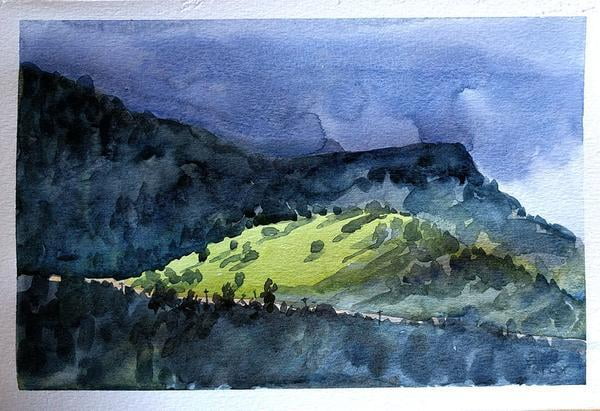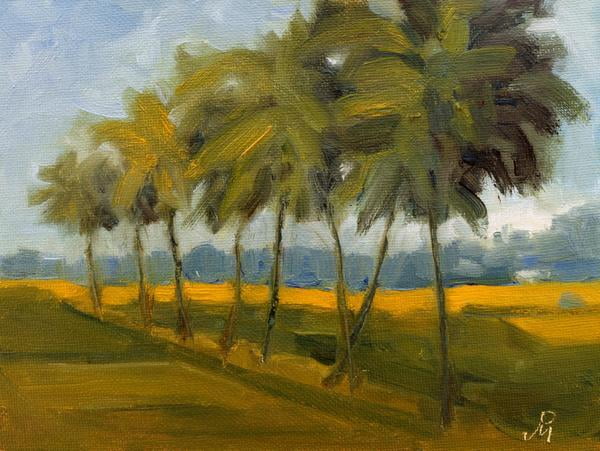In this post, I'll try to compare oil colors to watercolors and also explain their peculiarities and differences.
I won't say this medium is better than that or this medium is difficult to learn than the other. Doing such a comparison doesn't achieve anything and is like comparing a sitar and a guitar. Both are good in their own right and have their advantages and disadvantages.


Standing Tall - Oil on canvas
Here is a non-exhaustive list of their peculiarities and differences.
- Ease of handling the medium on the paper or canvas.Oil colors do not dry fast and so one can manipulate the colors more easily on canvas for a longer duration. Watercolors dry fast and so the time available to manipulate color on paper is very less.
- Ease of handling the medium outside of paintingWatercolors tend to dry faster, even when inside the tube, than oil colors. They dry due to evaporation of water and oil colors dry by oxidation of oil film. Oil colors also remain usable for a longer duration on the palette than watercolors. Even though you can re-wet dry watercolors on the palette, they are not as good as wet color straight from the tube.
- TransparencyWatercolors are more transparent than oil colors. One of the primary reasons for this is that when they dry, only the pigment remains on paper and the medium (water) has evaporated and gone. When oil colors dry, there is a film of dried oil that holds the pigment molecules in place.
- Change in value and saturation when dryOil colors look the same when you apply them and after they are dry. Whereas, watercolors become lighter and look less saturated when they dry. This behavior depends on the quality of the paper. Therefore, artists have to compensate for this behavior and apply color darker and more saturated than what they expect on dried painting.
- Wet in wet effectWet in wet technique is one of the greatest advantages of watercolor. To get a somewhat similar result with oil colors, manual blending is necessary.
- Gradation and controlled color changeControlled change in the value and hue of the color is easily achieved in oil colors. Watercolor does not give the artist so much control over it. It is often said that watercolor itself, rather than the artist, paint the painting.
- PortabilityAs they dry very fast, watercolor paintings are more portable than oil paintings. This is very helpful in on-location or 'en plein air' painting. Even then, for some reason, 'plein air' painting is still done more often with oil colors. It just needs more preparedness to carry the paints and carry back the finished painting safely.
- Display of paintingsWatercolor paintings need the protection of a glass frame. They cannot be varnished due to the danger of dislodging color and darkening the white areas. Oil paintings do not need glass covering as the oil film itself gives better protection. They are generally varnished to give them an extra layer of protection.
- LongevityThough it largely depends on the quality of colors used, generally speaking, watercolor paintings tend to fade a lot earlier than oil paintings. Hence, watercolor paintings need more care while displaying.
- Method of paintingWhile painting with oil colors, one typically starts with darks and gradually applies lighter colors. Watercolor paintings are started with lighter washes and darker colors are applied towards the end of the painting process. These methods of color application are very commonly used ones but are not strict rules.
Whether a particular characteristic of colors is an advantage or a disadvantage depends totally on what kind of results you are looking for in your art. Both these mediums are very capable and have been successfully used by artists for centuries. I hope this information will help you choose the right medium for your way of painting.




